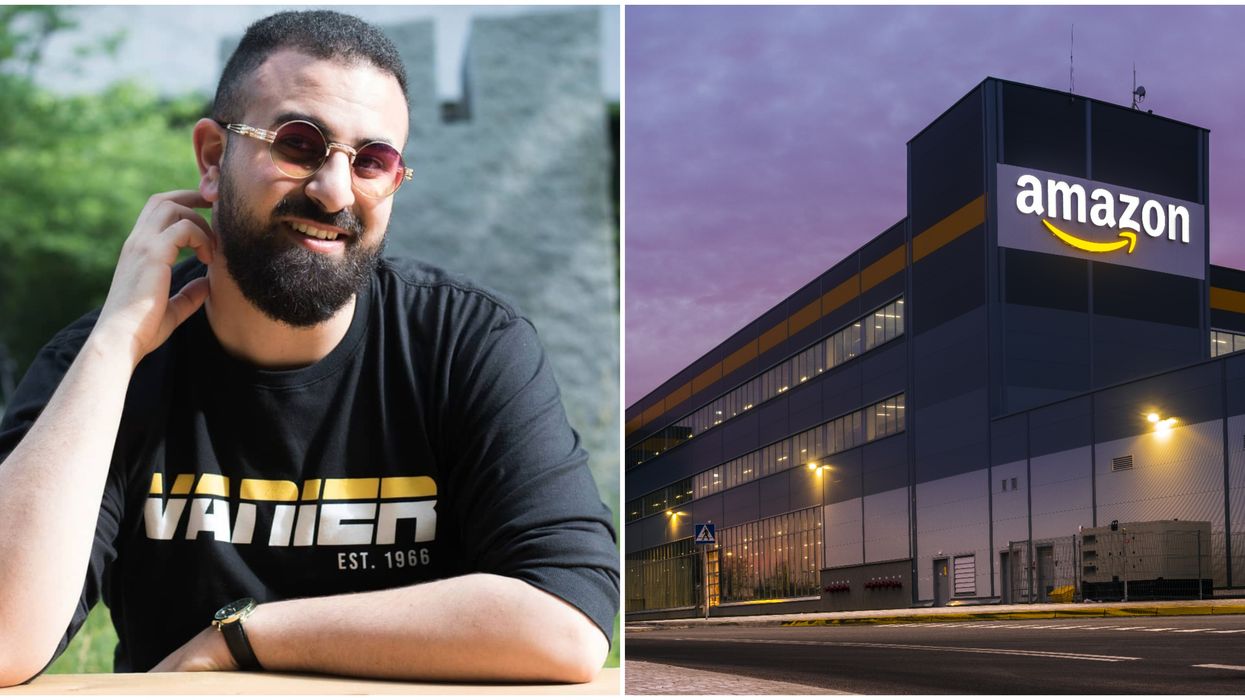'Unsafe & Mismanaged': A Brampton Amazon Worker Reveals What It Was Like During COVID-19
On March 12, a Brampton Amazon facility was ordered to close for two weeks due to an outbreak responsible for more than 600 COVID-19 cases, says Peel's Medical Officer of Health Dr. Lawrence Loh.
Narcity spoke to a former employee of the facility, Kareem El Kady, who started in September 2020 and worked for approximately a month.
He claims that the "mismanagement of COVID-19 measures" has been present since the fall.
Editor's Choice: Ottawa Has New Floating Tiki Bars Where You Can Sip Cocktails & It's Pure Paradise
What COVID-19 measures did the Brampton facility have in place in September?
El Kady claims that Amazon did have initial measures in place for when employees entered the building.
"When you walked in, you passed [through] turnstiles, they measured your temperature [...] and they had two people behind glass with, you know, sanitizer and stuff available," he explains.
"They'll check your temperature but they won't really stop anyone to actually slow them down to check. They just kind of let people pass through. So I'm not exactly sure how accurately they're measuring people," El Kady continues.
He also described camera technology that helped to enforce social distancing at the entrance of the building.
"They have a camera that would show you your surroundings and there was a little circle around you showing, say, about a one-metre radius around you. And then if your circle touches enough persons then you know you're too close."
Where did Brampton Amazon fall short on the COVID-19 protocols?
However, El Kady says that, while Amazon touted their measures to the public, once he entered his department, where employees picked the products customers had bought, the measures fell flat.
"You get these carts [to pick products] and they get left anywhere," he says. "There wasn't really a designated pickup spot where they were cleaned, so a lot of them get passed from person to person, without any sort of cleaning process.
"And there's also totes [for the products]. It was never clear if they're being cleaned. And a lot of times, those get passed from person to person as well," he continues.
The warehouse itself was never observed to be cleaned by El Kady, either.
"I used to work overnight and overnight was when there was the least amount of employees, when it might be possible to deep clean, and there was no staff dedicated to doing cleaning at that time."
When a Brampton Amazon employee fell ill with COVID-19, the remaining staff were not equipped with enough information to protect themselves, El Kady claims.
"Anytime there was someone who was sick, we'd get a text message saying, 'On this date, someone was found to be sick,' [but] they wouldn't tell you who or what [department] that person was in," he says.
With thousands of employees, this made it difficult to decipher whether one had been exposed and needed to get tested or isolate.
To this point, Amazon Canada responded by stating that "[they] are going further than most and sharing with employees every time [they] get a new confirmed case and when the person was last in the building. [...] We do not share more than that to protect the infected employees’ privacy."
El Kady says he personally felt "unsafe" while at work.
What's going on with the current outbreak at the facility?
On March 12, 2021, Peel Public Health ordered the Heritage Road facility to close for two weeks and for all employees to self-isolate for 14 days due to a large outbreak.
The outbreak began in October and is responsible for more than 600 cases, said Peel Region's top doctor Lawrence Loh on Friday.
According to reports by CP24, Amazon has said it will continue to pay employees that are currently self-isolating but that it will also aim to appeal Peel Region's decision.
Amazon Canada responded to allegations of mismanagement with the following statement:
"Nothing’s more important than the health and safety of our employees. [...] In 2020, we invested $11.5 billion in safety measures and equipment in our buildings, including masks, temperature screening, plexiglass shields, sanitizing products, additional cleaning teams, and even an on-site testing program. We’ve also made over 150 significant process changes to make sure we’re keeping our team safe throughout each day, including new social distancing measures and enhanced cleaning and sanitizing across every site.”

